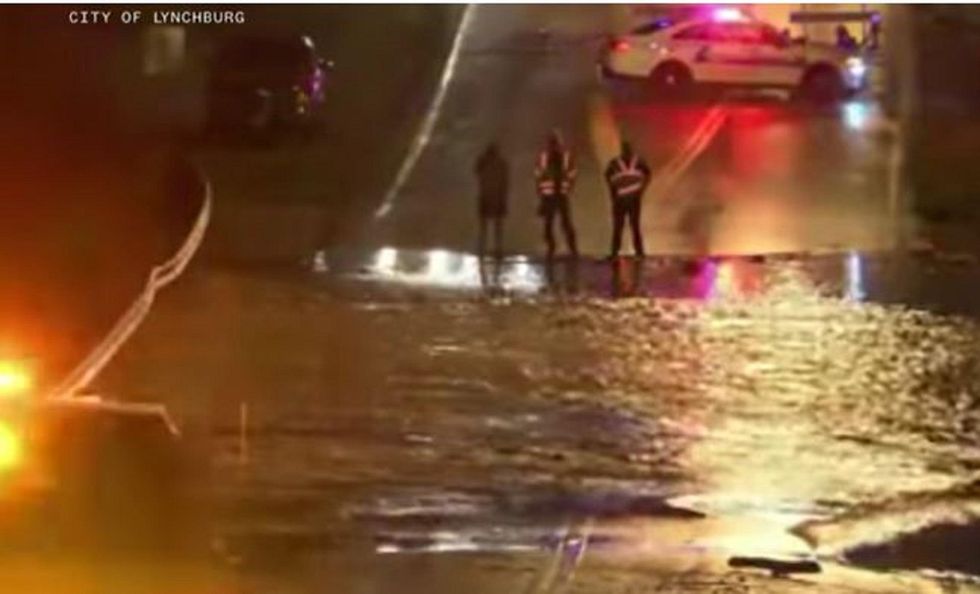
Parts of Lynchburg, Virginia, have been evacuated as floodwaters have compromised the integrity of a dam upstream. (Image source: YouTube screenshot)

Heavy rains have caused flooding in Lynchburg, Virginia, prompting officials to order evacuations out of fears that a weakened dam could break and cover the city in several feet of water.
The area received somewhere between 4 and 6 inches of rain Thursday evening, filling College Lake and flowing over its dam. A warning from the National Weather Service warned that, if the dam fails, "the water depth at Lynchburg could exceed 17 feet in seven minutes."
Late last night, county officials reported that the dam was in danger of "imminent failure," as local first responders shuttled boats into floodwaters to rescue citizens and take them to shelters.
"The good news is that the rain has stopped and began to recede yesterday, relieving some of the pressure on the dam," Major Tommy Carter of the Lynchburg Sheriff's office told Fox News on Friday, "but the bad news is that there's more rain in the forecast today and the dam has been weakened."
He said the community was "preparing for the worst."
Roughly 124 homes remain threatened in the city of 80,000, which is located in the Blue Ridge Mountains.
College Lake sits adjacent to the University of Lynchburg, and the dam was built in 1934 by the Virginia Department of Highways. The city of Lynchburg owns the dam and is responsible for its upkeep.
In 2014, officials launched an investigation to determine the safety of the dam after a city engineering study raised alarms that it posed a possible hazard to residents living downstream. Engineers determined that the dam's spillway was not large enough to handle water flow in the event of extreme weather conditions.
Recommendations from the investigation called for either rehabilitating the dam or having it completely decommissioned. Since then, the city has continued to analyze the dam to determine how to move forward.
Jen Gearing, the public information officer for Lynchburg Water Resources, told TheBlaze on Friday, "We've done the preliminary engineering analysis, weighing our options and balancing them with budget constraints. ... Obviously, we're now trying to move quicker."
The Virginia Department of Conservation and Recreation listed College Lake Dam as being "high hazard" in 2011, estimating at the time that it would cost $4.5 million to fix. More recent projections have placed the repair costs at $10 million.
But "high hazard" refers to the level of risk such as loss of life or economic damage if a breach were to occur, according to the report. The term is unrelated to the actual structural integrity of the dam.
Scott Thomas, an engineer for the Department's Division of Dam Safety and Flood Plain Management, confirmed to TheBlaze on Friday that the dam upstream from Lynchburg was in compliance with the Virginia Dam Safety Act.
"Unfortunately," he said, "a lot of rain in a short period of time can cause this. But [the dam] is in compliance."
Giving an update just before 2 p.m. ET, Gearing told TheBlaze, "At the moment, the dam is stabilized with no immediate fear of failure."
She said the plan next was to open a 3-foot by 3-foot sluice in order to lower reservoir levels to make it more safe.
Then, Gearing said, workers can stabilize the bridge in preparation for the next storm approaching.